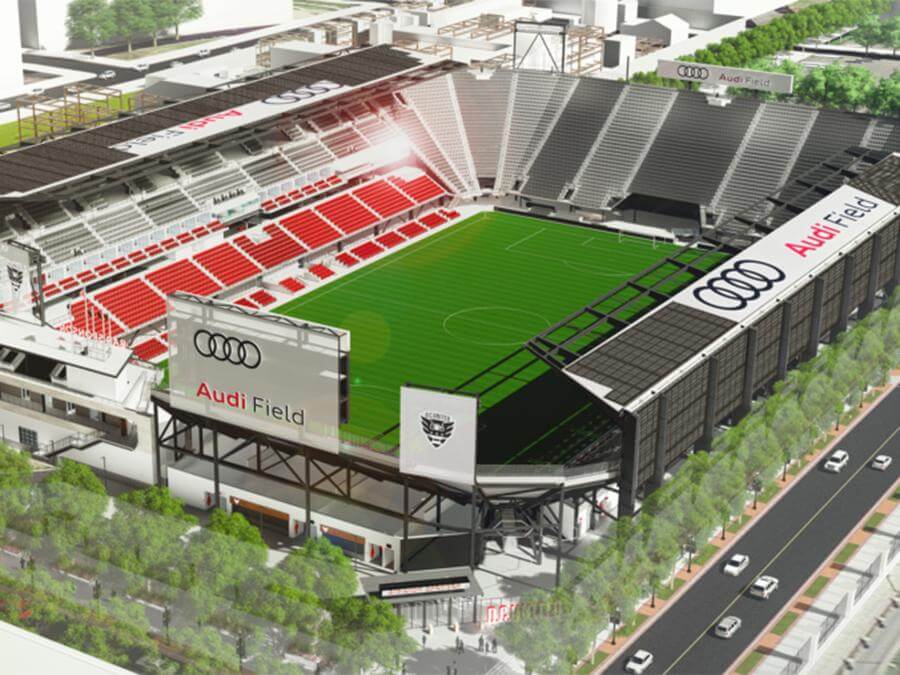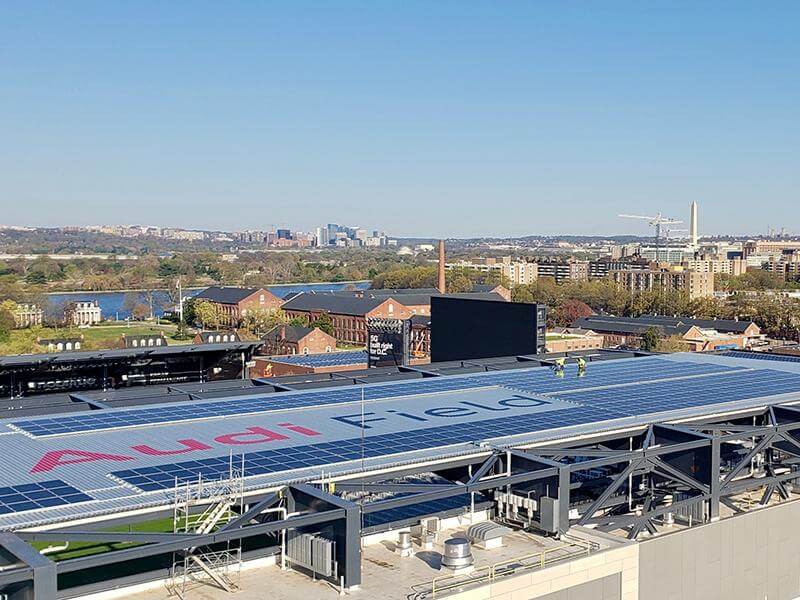New Columbia Solar Puts ~$30K/Year on Scoreboard for D.C. United’s Audi Field




Zachary Abaie
/ Head of Communications, D.C. UnitedA Winning Team with SolarEdge
With the task of installing a canopy system, New Columbia Solar turned to SolarEdge solutions for its engineering and design flexibility. SolarEdge’s solutions allowed engineers to optimize roof space, reduce cables, combiner boxes and achieve lower balance of system (BoS) costs. In addition, the system’s built-in SafeDC™ feature automatically reduces DC voltage to touch-safe levels during grid failures, providing maximum protection to the stadium.

The new SolarEdge PV system can potentially reduce the stadium’s grid dependency by approximately 30% annually, while saving ~$30,000/year on utility bills. It will also reduce CO2 emissions by 556 metric tons annually – the same amount of electricity required to power 95 homes for a year – creating a healthier environment for stadium visitors and locals.